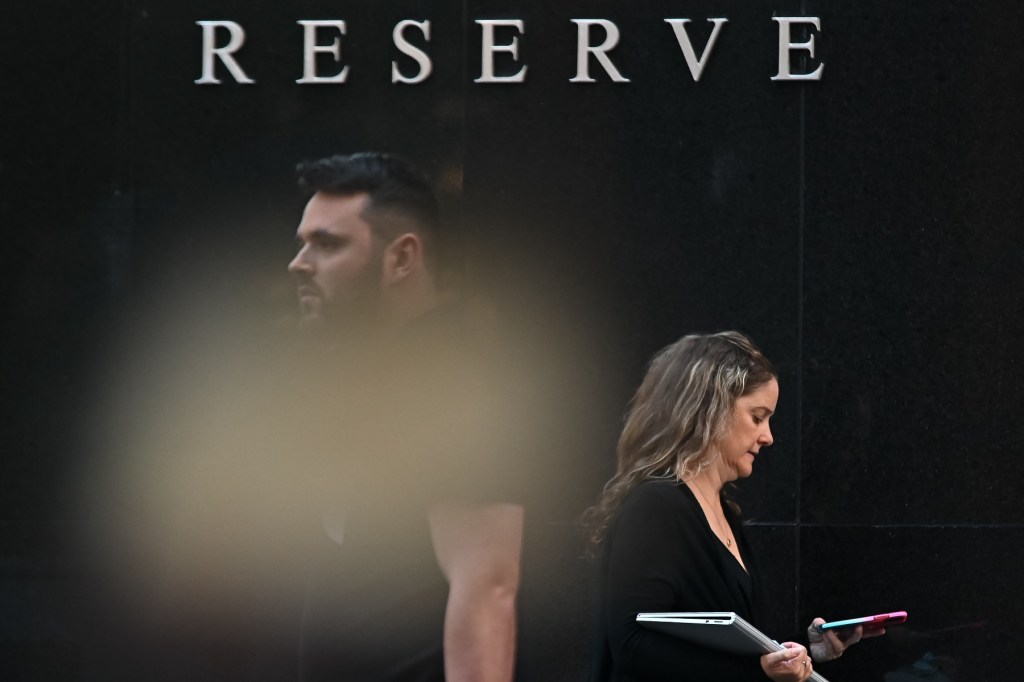Unemployment is rising and Australia’s economy is weak – but don’t hit the recession alarm just yet | Greg Jericho

- by Admin
- August 28, 2024

Next week’s March quarter GDP figures will once again put the spotlight on the weakness of the economy. But questions about a recession are already with us and the answer is rather complex.
Australia’s economy grew just 0.1% in the last quarter of 2023. That is, to be blunt, not a lot. Given that each quarter the growth figures are revised slightly, there is a small worry that next week we could find the December quarter revised to go backwards. If the March quarter then fell, that would mean hello, recession! Population: us!
The good news is that this is unlikely. The quarterly growth figures do change but usually they go up, not down:
If the graph does not display click here
So that’s the good news: unless something out of the ordinary occurs, we are not likely to get a shock recession announcement next week.
But is a recession coming?
Last week Deloitte dropped a large cat among the pigeons when it suggested that the lack of hiring among companies was consistent with a rise in unemployment that would put us into recession territory.
None of this is surprising.
In July I reported how businesses were much less likely to hire than they were six and 12 months ago, and back in March I noted how the rise in unemployment was putting us closer to recession territory.
All the talk in the past week or so about recessions has not actually been about GDP going backwards but the rise in unemployment triggering the “Sahm rule” of recessions.
I’ve been talking about this rule for some time now – I first mentioned it in 2020 – but it has taken a while for it to become part of the mainstream commentary.
Essentially the rule looks at changes in the unemployment rate rather than GDP to determine recessions. Claudia Sahm, the economist who created the rule, argues essentially that when unemployment rises half a per cent in a year that has historically meant a recession is coming.
The problem for Australia is the July unemployment rate means that right now the Sahm rule for Australia is 0.49% points:
If the graph does not display click here
So is that it? Are we headed for a recession?
Well, no.
Firstly, the whole point of the Sahm rule is to prevent a recession. Sahm devised this rule to get governments and central banks to act earlier rather than wait for GDP to go backwards.
One other reason for optimism is that, while unemployment is rising, for the most part this is due to youth unemployment:
If the graph does not display click here
This is not to discount the impact on younger workers but younger workers are always the first to be laid off because they generally have the least experience and skills. While that can be a sign that things are about to get worse (younger workers can be the canary in the recession coalmine), true recessions have unemployment rising for all workers.
When we break down the Sahm rule by youth workers and “prime-aged” workers between 25 and 64, it is clear that younger workers would feel as though they are in a recession but not so much everyone else:
If the graph does not display click here
That is not to say we can put up our feet and stop worrying. The last time (excluding the pandemic) when the unemployment of 25- to 64-year-olds was rising this fast was at the end of 2014. In response the RBA (perhaps belatedly) cut interest rates twice in the first half of 2015.
But the other reason to perhaps not to ring the recession alarm is that, while unemployment is rising, employment growth is holding up pretty well.
If the graph does not display click here
Both full-time and total employment for workers aged 25 to 64 is growing about 3% over the past year. That is not what you see during a recession.
So all good? Stop worrying and enjoy the recession-free economy?
Well, not quite.
While employment is holding up well, hours worked is not – and hours worked is in some ways a sharper indicator of how the economy is going than just counting jobs.
The hours worked by women aged 25 to 64 rose strongly after the pandemic – mostly off the back of a surge in healthcare and social assistance work within the care sector. Now it has hit a bit of a plateau. So not great, but OK.
But the average hours worked by men aged 25 to 64 is falling, and that is not good at all:
If the graph does not display click here
The average hours worked by prime working age men always falls during a recession and things at the moment suggest at the very least that it’s as tough now to get hours as it was before the pandemic. And, just in case you need reminding, back then economists were coming up with policies for the government to avoid a recession.
So, no, we are not in a recession and next week we are unlikely to discover any different. And, while we might be able to dismiss most of the rise in unemployment as among the youth, not everything is sweet and joyful.
The weak overall economic growth and poor increase in hours worked suggests the Reserve Bank will continue to look for a chance to cut interest rates without fear of driving inflation.
And the government will feel it made the right call delivering the stage-three tax cuts and energy rebates to help boost household spending so that the economy does not slow to the point that talk about whether we are in a recession becomes much easier to answer.
The Latest News
-
December 25, 2024Gearing Up for Australian Open, Nick Kyrgios Elevated in Bold Predictions From Renowned Tennis Experts
-
December 25, 2024Dads’ day out! Australian stars unwind with with wives, kids at MCG. Watch | Cricket News – Times of India
-
December 25, 2024India must continue to exploit ‘brittle’ Australian line-up: Ravi Shastri | Cricket News – Times of India
-
December 25, 2024Warne, Tendulkar, Muralitharan and (even) Gladstone Small: Eleven Boxing Day Test memories
-
December 25, 2024Where to watch Chiefs vs. Steelers in Australia: Streams, TV channel, time for NFL Christmas game live and on demand | Sporting News Australia



